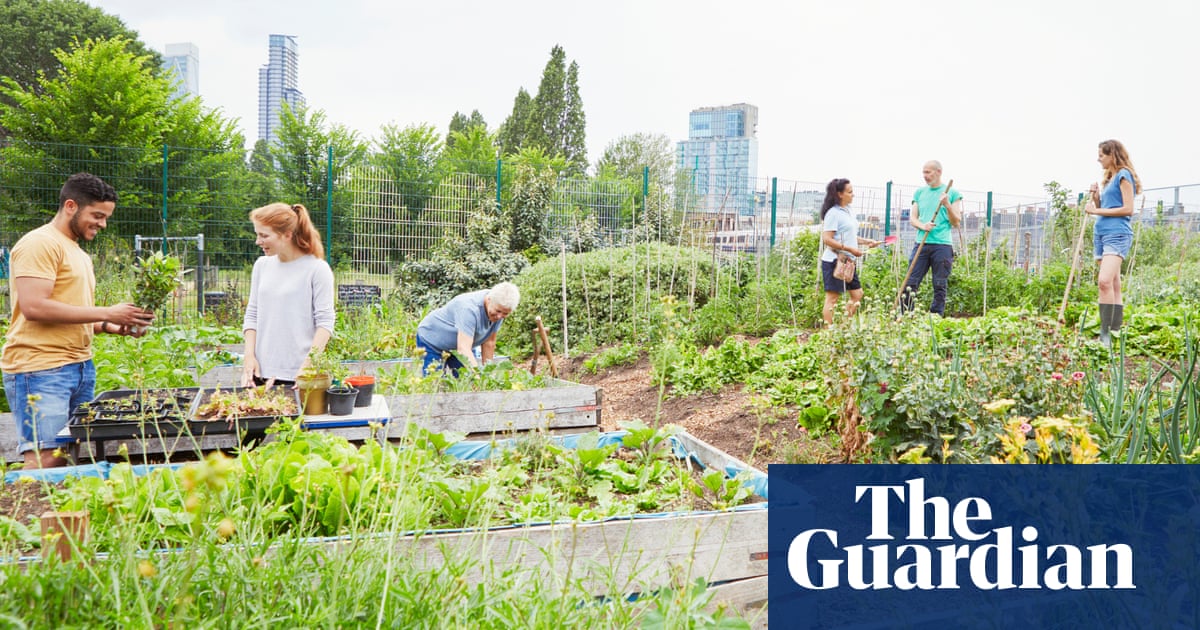
The benefits of urban greening initiatives are increasingly well documented: they can help mitigate the effects of urban heating, and improve physical health and mental wellbeing. And even small greening actions in cities can significantly improve local biodiversity, new research suggests.
Increasing the diversity of native plants in a single urban green space resulted in a sevenfold increase in the number of insect species after three years, Australian researchers have found.
According to the study’s authors, there had previously been “little empirical evidence of how specific greening actions may mitigate the detrimental effects of urbanisation”.
Sign up for Guardian Australia’s free morning and afternoon email newsletters for your daily news roundup
Existing research largely involved observational studies where urban greening had already taken place and “scientists come after the fact to see what’s happened”, said the study’s lead author, Dr Luis Mata of the University of Melbourne and a lead research scientist at Cesar Australia.
The greening initiative was conducted on a small 195 sq m plot of land in Melbourne, on a site adjacent to a major road.
“It was conducted in a very densely urbanised area, completely surrounded by streets and relatively tall buildings, and with limited access to surrounding green space,” Mata said.
Even so, the team found “substantial ecological changes”, he said. “I think we found a really strong signal given the disadvantages of the site itself.”
Researchers measured baseline insect numbers the year before greening began, when 12 indigenous plant species were introduced to the space, and subsequently conducted insect surveys for the following three years.
They identified 94 insect species in total, 91 indigenous to the Australian state of Victoria. The researchers estimated that by the final year of the study there were about 7.3 times more insect species than originally present, even though only nine plant species remained.
The team also found substantial increases in the number of predator and parasitoid insect species, which help to regulate populations of pest insects.
“These are two key groups that provide a really good ecological signal that the trophic network and all the proper interactions are happening at the site,” Mata said.
The researchers concluded that the study contributed a “critical evidence base to support future greening projects and the practice, policy and decision-making for protecting nature in urban environments”.
“I think we’re starting to see some good greening outcomes that are being captured in policy, at least in principle,” Mata said. “Providing the evidence that greening is actually working is critical.”
He hopes the study may motivate gardeners who are encouraged to plant native plants. “This could help provide the evidence that … no matter how small your intervention, you’re going to derive a good positive ecological outcome.”
“We really need to do a better job valuing small, isolated green spaces,” said Prof Dieter Hochuli of the University of Sydney, who was not involved in the study. “The size of the area being studied is what many would typically claim doesn’t really serve as great habitat for things, and isn’t contributing much to biodiversity and its management. The data in this paper show otherwise.
“It’s also a potent reminder of the importance [of] consider[ing] the quality of habitat, not just the amount of it. We often take simplistic approaches framed around planting more trees or creating more green space without considering how well it provides for species that might use it. It’s not a case of ‘any green will do’.”
Other research in urban green spaces has linked sites with flowering plants to greater insect biodiversity compared to sites with non-flowering plants.
“Small-scale greening can be highly beneficial to invertebrate communities, which in time can support higher order taxa like birds,” said Dr Caragh Threlfall of Macquarie University, who was not involved in the study.
Increasing access to green and blue spaces and ensuring biodiversity-inclusive urban planning was agreed as one of the targets of the Cop15 summit last year.
The research was published in the journal Ecological Solutions and Evidence.
Other research in urban green spaces has linked sites with flowering plants to greater insect biodiversity compared to sites with non-flowering plants.
“Small-scale greening can be highly beneficial to invertebrate communities, which in time can support higher order taxa like birds,” said Dr Caragh Threlfall of Macquarie University, who was not involved in the study.
Increasing access to green and blue spaces and ensuring biodiversity-inclusive urban planning was agreed as one of the targets of the Cop15 summit last year.
The research was published in the journal Ecological Solutions and Evidence.












